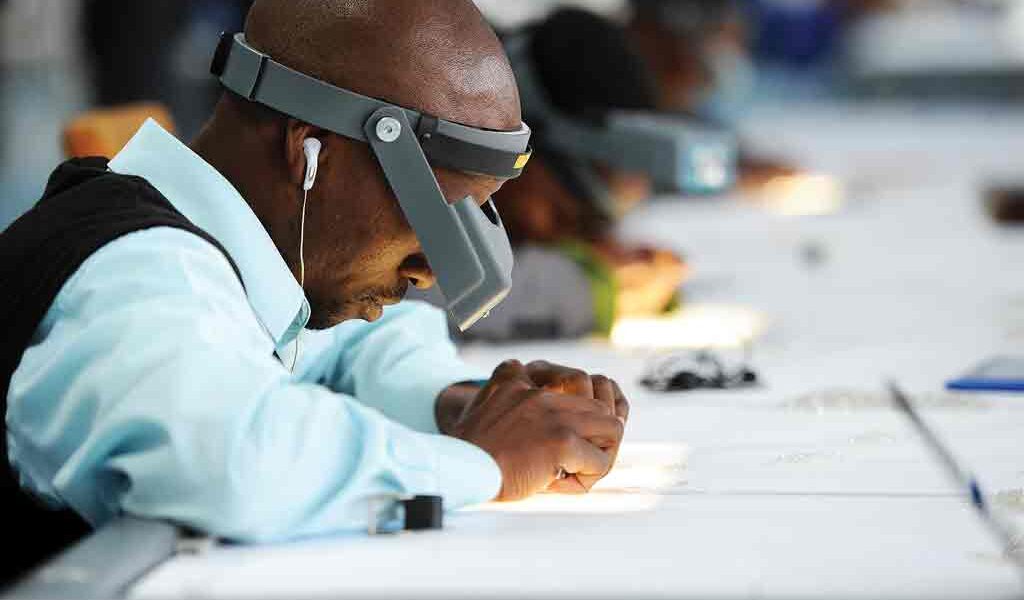- Growth in diamond production to average 4.4 %
- China, US demand for diamonds up
- GDP to grow at 4.5%
GAZETTE REPORTER
International research firm, Business Monitor International (BMI) says that economic growth in Botswana will accelerate over the next two years on the back of an expansion in mining sector production.
According to BMI, the increase in mining activity will benefit other sectors of the economy, stimulating further investment into energy generation focused infrastructure projects.
After stalling in 2017, BMI says it expects economic growth in Botswana to recover over the coming quarters on the back of an increase in mining sector activity. Growth was slow in 2017, after it averaged 1.0 percent in the first three quarters of 2017, resulting from weak commodity prices and unfavourable global demand.
BMI however says steady recovery in the economy’s crucial diamond industry will stimulate growth in 2018 and 2019. Diamonds contribute a quarter in Botswana’s domestic output.
Moreover, BMI says this upturn in the mining sector will contribute to an increase in government revenues and investor sentiment, likely sustaining an uptick in infrastructure investment and construction going forward.
“On the back of these positive trends, we forecast real GDP growth to come in at 4.5 percent in 2018 and 4.7 percent in 2019, marking a sharp acceleration from an estimated percentage in 2017,” says BMI.
Diamond Sector To Drive Recovery In 2018
In 2017 prices for rough diamonds went up 2.7 per cent, while polished prices went down 3.5 per cent. Rough diamond prices are also expected to go up as much as four per cent this year, which analysts say will have a significant impact on the diamond industry.
Further, the agency says a recovery in diamond production and prices will support more robust economic growth in Botswana over the next two years. A downturn in the trade of precious metals and stones, which accounted for 88.7 percent of Botswana’s exports in 2016, weighed on the country’s economic growth last year. However, after demand from China, India and the US started to rebound in the second half of 2017, we expect prices will continue to increase in 2018 as a weak dollar will support momentum in global consumer luxury demand. Moreover, production from De Beers, the biggest mining company in the country, increased by 30 percent during the third quarter of 2017, and BMI expects it to continue to gradually expand in the medium term.
BMI experts have forecasted a year-on-year growth in diamond production in Botswana to average 4.4 percent between 2017 and 2022. “Finally, we expect the mining industry to offer further tailwinds to headline growth as the government looks to strengthen its cooperation with De Beers in augmenting the diamond sorting, cutting and polishing operations inside the country,” states the firm.
The company, which transferred its international sales operation from London to Gaborone in 2013, is committed to boosting employment and growth through investment into value-added segments of its value chain. Progress towards beneficiation will likely create more robust economic activity and generate employment for national citizens in a multi-year time frame as the country moves up the value chain.
“We believe that an increase in revenue from the mining sector will provide policy space for further fiscal stimulus in 2018-2019, adding further tailwinds to economic growth.” adds BMI.
Custom duties and taxes on mineral companies represented close to 60 percent of total government revenues in 2016. BMI expects the increase in revenues in the next two years to support the government’s development efforts under its 11th National Development Plan. The plan, which sets the administration’s development strategy for 2017-2023, focuses on increasing capital spending and supporting private public private partnerships (PPP) into energy infrastructure investment. Moreover, government PPPs have recently attracted a lot of attention from private investors, increasing activity in the construction sector.

